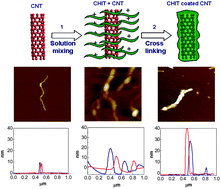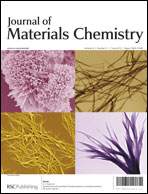Controlled conductive junction gap for chitosan–carbon nanotube quantum resistive vapour sensors
Abstract
The sensitivity of quantum resistive vapour sensors depends exponentially on the average gap between two conductive nanofillers at conductive junctions. The influence of this parameter on the chemo-resistive properties of


 Please wait while we load your content...
Please wait while we load your content...